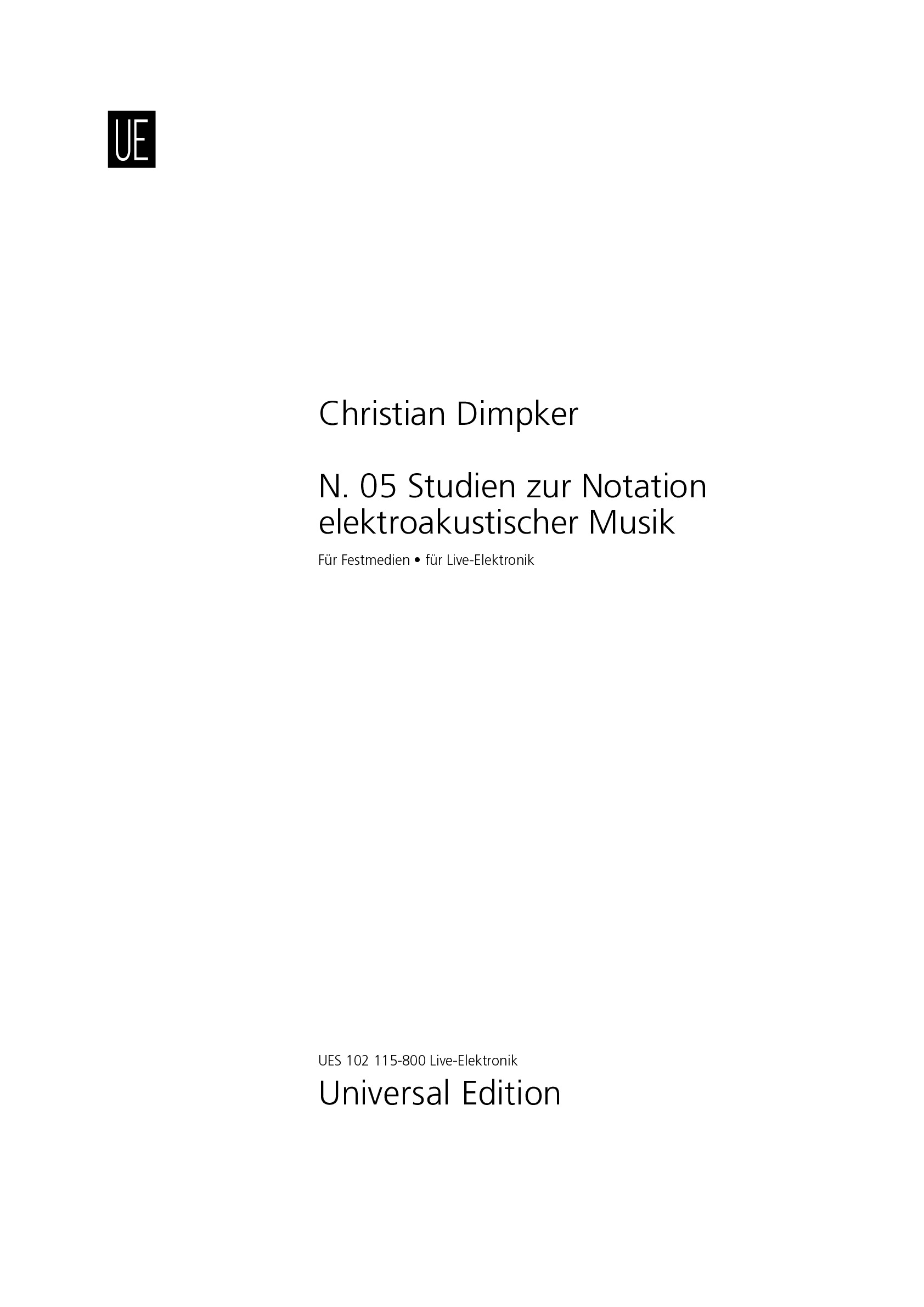

Christian Dimpker
N. 05 Studies on the notation of electroacoustic music
Duration: 4'
Solos:
live electronics
N. 05 Studies on the notation of electroacoustic music
Translation, reprints and more

Christian Dimpker
N. 05 Studien zur Notation elektroakustischer MusikOrchestration: Für Festmedien
Type: Noten
Sample pages
Video
Work introduction
In the four Studies, numerous methods that were developed in order to be able to notate all elements of electroacoustic music (Dimpker: Extended Notation. Vienna 2013) are utilised. The Studies are the first applied research work of this kind – after about 50 years of stagnation. Thus I had to approach this piece by starting in the middle of the 20th century and could hardly refer to similar works. The Studies give birth to the so-called abstract electroacoustic music. It took seven years until I could finally listen to the complete piece and was able to use this experience in other works. In the meantime, I have composed abstract electroacoustic works that are as complex as orchestral works. Despite their score size, however, the Studies can be considered electroacoustic chamber music. Unlike conventional electroacoustics, this piece can be re-interpreted (while each realisation is only one possible interpretation), can be easily analysed (because the score depicts all parameters) and offers an additional visual level of perception (that can also be consulted while listening). In Study I, stereo recordings, e.g. of thunderstorms, forests, wind, saws, brooms or hammers, are organised in time. These sounds are then subjected to simple sound transformations in Study II. In Study III, these recordings are used to create an instrument based on granular synthesis that is combined with simple synthesis techniques. These techniques are profoundly extended in Study IV and combined with the thunderstorm that initiated the piece.
What is necessary to perform this work?
The Studies on the notation of electroacoustic music consist of four connected short studies. Study I deals with microphonics and non-instrumental sound sources and Study II with the transformation of these sonic events. They are combined with a granular synthesiser based on grain loops, which merges in Study III with different forms of sound synthesis. The studies are placed in a chapel with a reverberation time of 5 seconds. One may use existing impulse responses.
